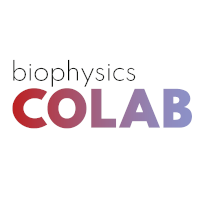Reviewed articles
 A list by Biophysics Colab
A list by Biophysics Colab
Articles that have been reviewed by Biophysics Colab.
Showing page 2 of 2 pages of list content
-
Structural and mechanistic analysis of a tripartite ATP-independent periplasmic TRAP transporter
This article has 17 authors:This article has been curated by 1 group:Reviewed by Biophysics Colab
-
Calcineurin-fusion facilitates cryo-EM structure determination of a Family A GPCR
This article has 8 authors:Reviewed by Biophysics Colab
-
Combinatorial G x G x E CRISPR screening and functional analysis highlights SLC25A39 in mitochondrial GSH transport
This article has 11 authors:Reviewed by Biophysics Colab
-
Structural basis of ion – substrate coupling in the Na+-dependent dicarboxylate transporter VcINDY
This article has 6 authors:This article has been curated by 1 group:Reviewed by Biophysics Colab
-
Chloride ions evoke taste sensations by binding to the extracellular ligand-binding domain of sweet/umami taste receptors
This article has 7 authors:This article has been curated by 2 groups:Reviewed by eLife, Biophysics Colab
-
The dopamine transporter antiports potassium to increase the uptake of dopamine
This article has 10 authors:Reviewed by Biophysics Colab
-
TMEM16 scramblases thin the membrane to enable lipid scrambling
This article has 9 authors:This article has been curated by 1 group:Reviewed by Biophysics Colab
-
The versatile regulation of K2P channels by polyanionic lipids of the phosphoinositide and fatty acid metabolism
This article has 6 authors:Reviewed by Biophysics Colab
-
Fast ATP-dependent Subunit Rotation in Reconstituted F o F 1 -ATP Synthase Trapped in Solution
This article has 2 authors:This article has been curated by 1 group:Reviewed by Biophysics Colab
-
Mechanism of CFTR correction by type I folding correctors
This article has 2 authors:This article has been curated by 1 group:Reviewed by Biophysics Colab
-
Structural basis of polyamine transport by human ATP13A2 (PARK9)
This article has 4 authors:Reviewed by Biophysics Colab
-
Single-molecule imaging with cell-derived nanovesicles reveals early binding dynamics at a cyclic nucleotide-gated ion channel
This article has 6 authors:This article has been curated by 1 group:Reviewed by Biophysics Colab